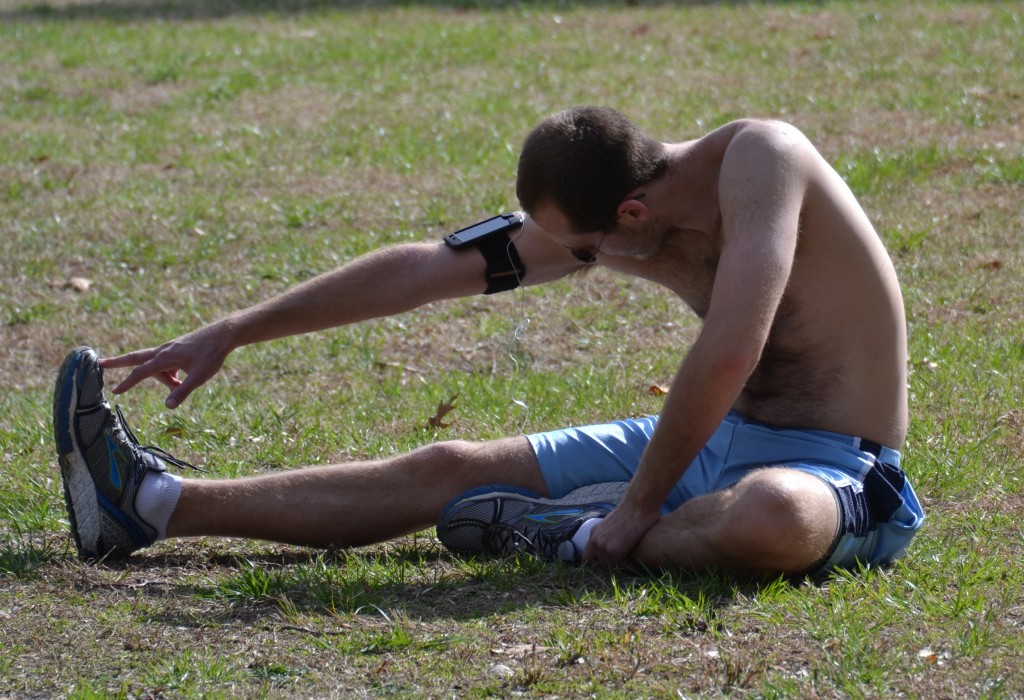
The 3 Most Common Fitness Myths
Tony Alter, via Flickr Creative Commons
As a long time trainer and medical-based exercise physiologist, I value the importance of up-to- date and accurate information. I also realize there is a lot of inaccurate information on the Internet, in magazines and through word of mouth. Here are a few of the most common fitness myths that many people believe and even hear from their trainers.
If you can’t catch your breath to speak a sentence, your exercise intensity is too high.”
1. “Heat and vigorous exercise help you sweat out toxins.”
You aren’t likely to purify your body of much of anything by sweating, whether it’s in a hot yoga class or sizzling sauna.
Perspiration consists of water, salt, and a smattering of electrolytes, according to Rachel Vreeman, MD, author of Don’t Cross Your Eyes…They’ll Get Stuck That Way! She writes: “Sweat glands sit in the skin and aren’t connected to other systems in the body, so it makes no sense that they would eliminate waste,” she says. “The only role of perspiration is to keep us cool.” The body does a pretty good job of getting rid of what it doesn’t need, largely through the liver, kidneys, and digestive tract. There’s nothing special you have to do to help, other than eat well, stay hydrated, and keep fit so those organs can function properly.”
2. “The more limber you are, the better.”
Even when trainers tell you not to force things, there’s an implicit message that your goal is to stretch further. The idea that if you can touch your knees now, you should be aiming for the floor. Or if you can touch the floor today, work toward hugging your chest to your knees. But achieving those goals may offer nothing more than bragging rights.
“Flexibility is certainly important, and you should be flexible enough to do the things you need or want to do without being uncomfortable,” says Jo A. Hannafin, MD, PhD, the orthopedic director of the Women’s Sports Medicine Center at the Hospital for Special Surgery in New York City. “But there is no health benefit in having a hyper flexible body or being able to twist yourself into a pretzel just for the sake of doing so.”
In fact, pushing your body into extreme stretches can cause injury. People with tremendously lax joints may be at greater risk for hurting themselves because their ligaments can’t effectively keep their joints in position, explains Polly de Mille, an exercise physiologist who works with Dr. Hannafin.
3. “Perspiration and a high heart rate are signs of a good cardio workout.”
Just because a Bar Method class kicks your butt, tones your abs, and leaves you soaked with sweat, it doesn’t qualify as a heart-healthy cardio session, no matter what an instructor might tell you.
For a workout to deliver true cardio benefits, “it’s got to be a rhythmic, dynamic activity that utilizes large muscle groups — for example, those in your legs and upper body — for a minimum of 20 to 60 minutes, depending on your level of fitness,” says Timothy J. Michael, PhD, a Professor of Exercise Science at the Western Michigan University in Kalamazoo. We’re talking brisk walking, running, or cycling that takes a moderately fit person to 60 to 80 percent of her maximum heart rate on a heart rate monitor.
For a rough gauge, use the talk test: “If you are mildly breathless but can carry on a conversation, you are working at a moderately intense pace, which is what you want,” says DeSimone of the American College of Sports Medicine. “If you can talk and talk without stopping to take a breath, you’re not working hard enough. If you can’t catch your breath to speak a sentence, your exercise intensity is too high.”
Are there any fitness ideas that you question whether or not they are a myth or reality?
Are there any fitness ideas that you question whether or not they are a myth or reality?








